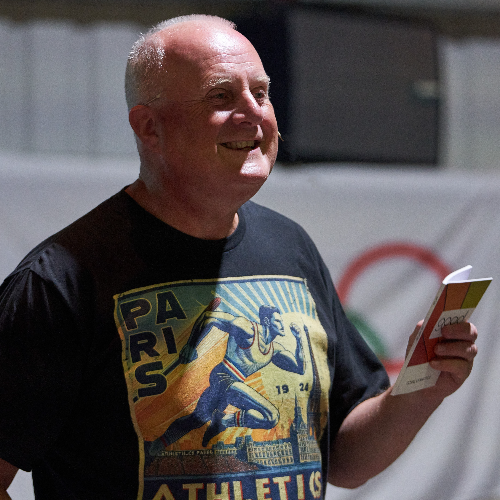-
Fruit Of The Spirit Is Peace Series
Contributed by Gordon Curley on Nov 28, 2017 (message contributor)
Summary: Fruit of the Spirit is Peace. (Powerpoint slides to accompany this talk are available on request – email: gcurley@gcurley.info)
SERMON OUTLINE:
(1). The source of peace is God. (3a)
(2). The discipline of peace is a steadfast mind (vs 3b)
(3). The secret of peace is a heart filled with trust (vs 3c-4)
SERMON BODY:
Reading: Isaiah chapter 26 verses 3-4
“But the fruit of the Spirit is love, joy, peace, forbearance, kindness, goodness, faithfulness, 23 gentleness and self-control. Against such things there is no law”.
• The opposite of love is hate.
• The opposite of joy is sorrow
• The opposite of peace is worry, anxiety, fretfulness, concern.
Ill:
• A very worried, anxious, fretful looking Native American Indian walks into a bank;
• He looked at the bank manager and said;
• “Grass gone, well dry, sheep dead”
• The bank manager took him into the back room & the Indian opened up his security box;
• It contained a number of gold nuggets.
• The Indian the replied:
• “Grass green, well full, sheep happy”
• Now the man’s circumstances had not changed;
• But now he realised he had the resources to overcome his circumstances.
• That knowledge removed his worry, anxiety, fretfulness and concern.
• Quote: The Scottish preacher George Morrison defined peace as:
• “The possession of adequate resources”.
Ill:
• In other words if there is enough money in your bank account;
• You don’t worry when the postman delivers bills.
Now earthly resources are important:
• That is why we go to work to earn enough money to buy these assets;
• But in themselves earthly resources are never enough;
• They may make for a comfortable lifestyle;
• But they cannot bring into our lives that quality of peace that we are need in our lives.
• And of course they were never meant to!
• That is why the Bible calls us foolish when we look to earthly resources;
• For satisfaction, for quality of life and as a means of attaining peace;
• God himself is the source of our peace!
• And apart from him we will never experience true peace of heart and mind.
BACKGROUND TO CHAPTER 26:
• In Isaiah chapters thirteen to twenty-seven;
• We have a number of prophetic messages from the Lord;
• The messages are for a variety of nations, but primarily the nation of Babylon;
• Who will rise up to crush Judah and destroy Jerusalem.
• Isaiah first warns all these nations individually;
• That God is over them and will take away their glory because of their sins.
• Having delivered his messages to these particular nations,
• Isaiah then, beginning with chapter twenty-four,
• Looks to the much more distant future.
• He looks to the destruction and judgement of the whole world.
• But these chapters are not all gloom and doom;
• In Isaiah chapter 26 we are breaking into a ‘song of praise’ to God:
• The theme of the song is ‘Trust’.
• And the song can be summarised in four visual word pictures:
• Picture 1: A strong city (vs 1-6).
• Picture 2: A level path (vs 7-11).
• Picture 3: A woman in painful or excessive labour of birth (vs 12-18).
• Picture 4: A life-giving dew on the ground (vs 19-21).
• We are going to pick up on that first picture ‘a strong city’:
• And gain some insights regarding knowing God’s peace in our lives.
VERSES 1-6: A STRONG CITY.
• Isaiah is making a contrast in this song (chapter 25);
• And the previous song (chapter 25)
• In the previous song (chapter 25) Israel’s enemy Moab has been destroyed;
• Now in contrast in his song (chapter 26);
• The city of God is ‘strong’ (vs 1) and ‘lofty’ (vs 5)
• When this passage of scripture was penned;
• Isaiah and his contemporises mainly lived in an agricultural world of towns and villages;
• And the large cities were places of power and wealth.
• In times of war people fled to these walled cities for protection.
• Verse 2 reminds us that the ‘righteous’ may run through ‘open gates’ into the city;
• To find safety and protection from the enemy.
Isaiah lifts up his eyes and through the lens of prophecy looks to the future:
• In verse 1 he uses the expression ‘in that day”.
• Elsewhere in the Bible it is called “the Day of the Lord”.
• We do not know exactly when that day is,
• We do know it is an unspecified period of time in the future.
• The prophet Isaiah is encouraging these people with the knowledge that;
• One day God will set up his Kingdom;
• His enemies will be defeated and the New Jerusalem will be impregnable.
• Isaiah paints for the people a picture of hope and a time of peace;

 Sermon Central
Sermon Central



